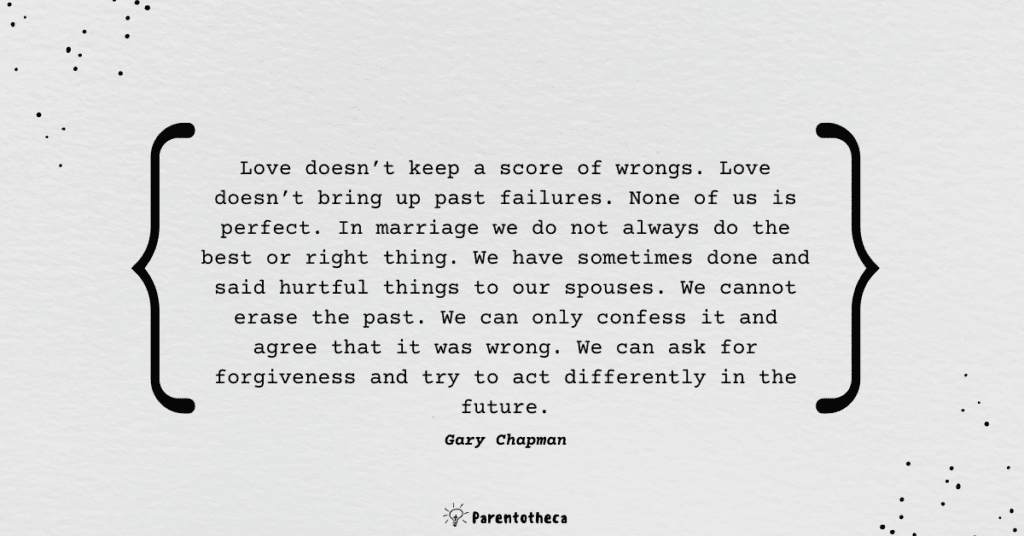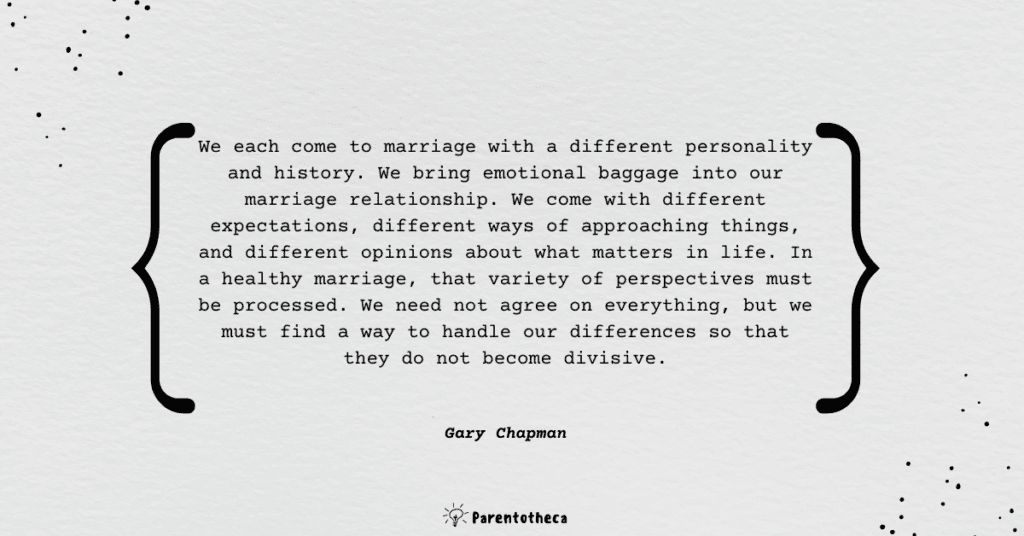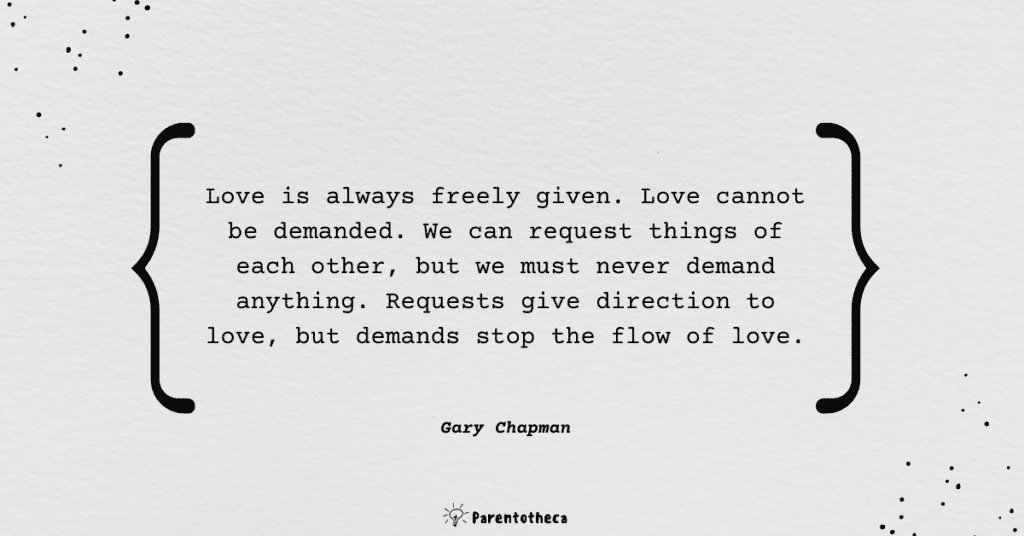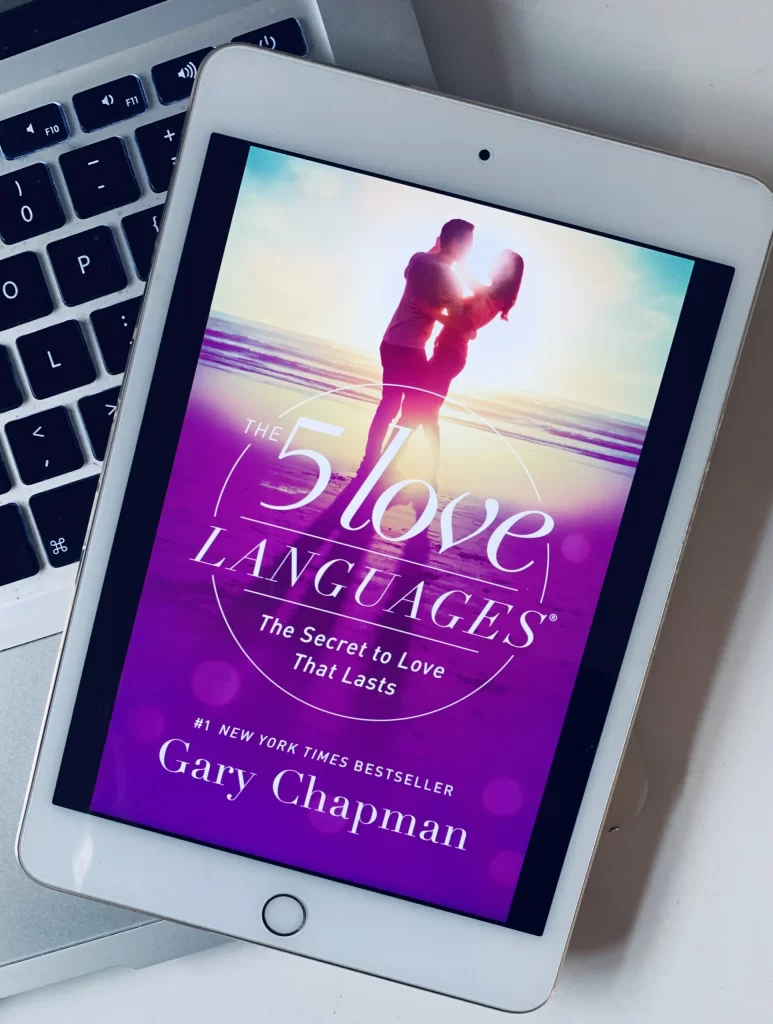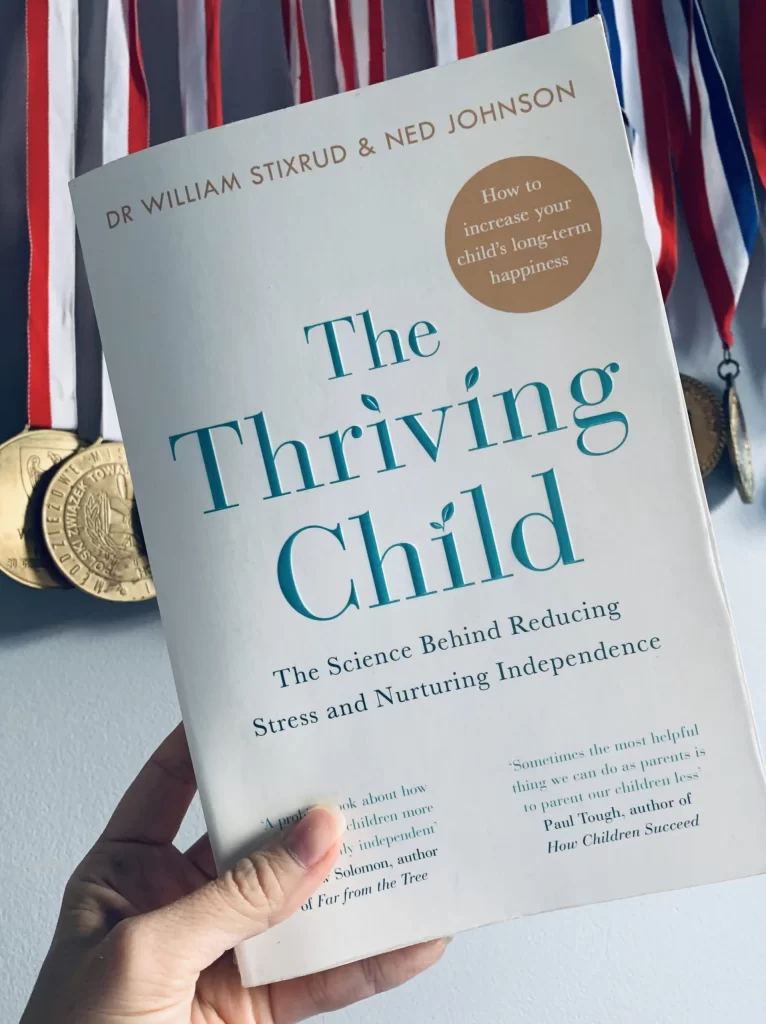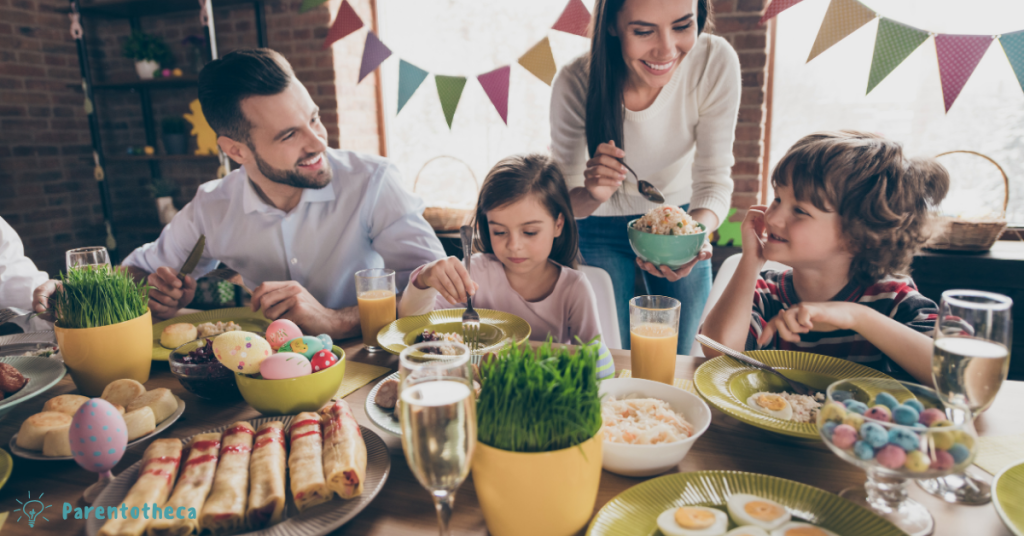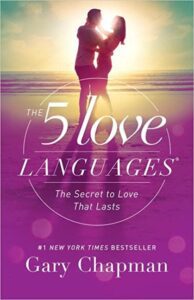 The 5 Love Languages. Book Summary
The 5 Love Languages. Book Summary
The Secret to Love that Lasts
Gary Chapman
Northfield Publishing; Reprint edition (11 Dec. 2014)
About the Author
Gary Chapman, Ph.D. is an author, speaker, and counsellor. He has a passion for people, and for helping them form lasting relationships.
Chapman is a well-known marriage counsellor and director of marriage seminars. The 5 Love Languages® is one of Chapman’s most popular books, topping various bestseller charts for years, selling over twenty million copies and has been on the New York Times bestsellers list since 2007. Chapman has been directly involved in real-life family counselling since the beginning of his ministry years, and his nationally-syndicated radio programs air nationally on Moody Radio Network and over 400 affiliate stations.
About the Book
“The desire for romantic love in marriage is deeply rooted in our psychological makeup. Books abound on the subject. Television and radio talk shows deal with it. The Internet is full of advice. So are our parents and friends and churches. Keeping love alive in our marriages is serious business.
With all the help available from media experts, why is it that so few couples seem to have found the secret to keeping love alive after the wedding? Why is it that a couple can attend a communication workshop, hear wonderful ideas on how to enhance communication, return home, and find themselves totally unable to implement the communication patterns demonstrated? How is it that we read something online on “101 Ways to Express Love to Your Spouse,” select two or three ways that seem especially helpful, try them, and our spouse doesn’t even acknowledge our effort? We give up on the other 98 ways and go back to life as usual.
The answer to those questions is the purpose of this book. It is not that the books and articles already published are not helpful. The problem is that we have overlooked one fundamental truth: People speak different love languages.”
Over 30 years ago a Christian pastor and relationship counsellor Gary Chapman wrote a book revealing the secret of long-lasting love. And it proved to be timeless. The 5 Love Languages is one of the most popular relationship books and has sold over twenty million copies. Yet, it was on my reading list for a ridiculously long time.
Drawing on his observations as a counsellor, Dr Chapman shares a very simple idea: everyone has a primary love language – a category of behaviours they most immediately associate with affection, tenderness and commitment to their partner. While working with couples, he also noticed that most relationship problems arise because one has not learned how to speak the love language of another.
Although I was pretty familiar with the five love languages (which are words of affirmation, quality time, receiving gifts, acts of service, and physical touch), I really enjoyed reading this short book and took loads of mental notes ☺
Over the years, Dr Chapman wrote many more books where he applied the concept of love languages to different circumstances. That makes me think the theory is universal and works for any relationship!
I’m excited to share my favourite ideas in these notes – let’s jump straight in!
Key Insights:
From “In Love” To Real Love
“We can recognize the in-love experience for what it was—a temporary emotional high—and now pursue “real love” with our spouse. That kind of love is emotional in nature but not obsessional. It is a love that unites reason and emotion. It involves an act of the will and requires discipline, and it recognizes the need for personal growth. Our most basic emotional need is not to fall in love but to be genuinely loved by another, to know a love that grows out of reason and choice, not instinct. I need to be loved by someone who chooses to love me, who sees in me something worth loving.”
“In-love” experience lasts up to three years. Then we either transition to “real love” or come up with an exit strategy. In short, while falling in love is easy, staying in love is not.
If we want our need to be loved met, we first must become someone worth loving. That’s why if you aspire to have a long-lasting happy relationship (aka ‘real love’), be ready to work hard.
Love is a wonderful tool for personal growth.
So want “happily ever after”? Put effort and show up every day at your relationship gym!
P.S.: from the scientific perspective, “falling in love” and “staying in love” depend on how our brain processes dopamine and so-called Here and Now molecules – check out our notes on The Molecule of More by Daniel Z. Lieberman & Michael E. Long for more.
The Love Tank
In the book, Dr Chapman teaches that we all have an ‘emotional tank’ waiting to be filled with love. The idea is pretty simple: when we receive love in our primary love language, it fills our love tank, and we feel loved. If our partner doesn’t express love in our primary love language, our love tank gradually depletes, and we feel unloved. And eventually, when our love tank is empty, we face issues in our relationship.
So if you want to have a happy and long-lasting marriage, you need to make sure you drive your “happily ever after” car on the full tank. And here, communication is the key.
Dr Chapman offers couples to play The Tank Check game:
“I suggest that you play the following game three times a week for three weeks. The game is called “Tank Check,” and it is played like this. When you come home, one of you says to the other, “On a scale of zero to ten, how is your love tank tonight?” Zero means empty, and 10 means “I am full of love and can’t handle any more.” You give a reading on your emotional love tank—10, 9, 8, 7, 6, 5, 4, 3, 2, 1, or 0, indicating how full it is. Your spouse says, “What could I do to help fill it?”
I guess it’s a great game to play with kids as well! You can play it during a family dinner, a family meeting, or when having Special Time with each child.
P.S.: I would also remind you to use Nonviolent Communication technic when giving feedback to your spouse ☺ Works magic.
P.P.S.: I also like how Stephen Covey pictures this concept in his excellent book The 7 Habits of Highly Effective Families. He uses a metaphor of an ‘emotional bank account’, where you can either make deposits or withdrawals. Again, the goal is to make daily deposits and never go into an overdraft.
The 5 Love Languages
“My conclusion after many years of marriage counseling is that there are five emotional love languages—five ways that people speak and understand emotional love. In the field of linguistics, a language may have numerous dialects or variations. Similarly, within the five basic emotional love languages, there are many dialects. The number of ways to express love within a love language is limited only by one’s imagination. The important thing is to speak the love language of your spouse.”
We all understand and receive love differently. Some of us feel most loved when our spouse whispers “I love you” into our ear, some praise receiving gifts, while some will only be content when our partner scrubs the bathroom.
That’s what Dr Chapman calls love languages. Here is a quick look at all five of them and how they can be applied and optimised in your relationships.
Words of affirmation
Encouraging words, compliments, and words of appreciation are essential ingredients in any happy relationship. That’s one of the simplest ways to express gratitude and appreciation to your spouse. If your partner’s love language is words of affirmation, express your love verbally as often as possible. You can try this Thanks Giving Exercise.
Quality time
That’s about doing something together where you give your partner your full attention. One simple way Dr Chapman suggests doing this is to schedule some time each day when each of you will talk about three things that happened during the day and how you feel about them. That’s like having Special Time with your spouse. Cooking dinner together, exploring a new hobby, sharing plans for the future – whatever works the best for you and your partner.
Receiving gifts
People whose primary love language is receiving gifts feel most loved when their partner presents them with a specific thing, tangible or intangible, that helps them feel special. A card, a box of favourite chocolates, or a Cartier ring – it’s not about the value, but about making them feel thought about. And yep, sometimes simple physical presence and your time are precious gifts.
Acts of service
Some people’s love tank is filled when others lend a helping hand or do something kind for them. If that’s your partner’s primary love language, do something that eases their daily grind – unload the dishwasher, scrub the toilet, or simply make them a cuppa.
Physical touch
Hugs, kisses, holding hands, and other touches – that’s what fills the love tanks of those whose primary love language is physical touch. And one caveat here: whether it’s your love language or not, we all need hugs to stay healthy! As Virginia Satir once said: “We need four hugs a day for survival. We need 8 hugs a day for maintenance. We need 12 hugs a day for growth.”
Dr Chapman suggests each of us has one or two primary languages. Often, they are different than our significant other’s. So if you express your love in YOUR love language, the chances are that it goes unnoticed by your spouse. To fill their love tank, you need to speak THEIR love language.
For example, if your partner’s love language is quality time, but you put a lot of effort into expressing your love through acts of service (your primary language), the response is most likely to be, “Of course, I appreciate that he helps around the house, but I still don’t feel loved.” So instead of cleaning and washing dishes after dinner, offer to walk in a park or just spend some time together sipping wine and discussing plans for the future. Fill in your spouse’s love tank. Dishes can wait.
All five love languages are essential for healthy relationships. But if you apply the Pareto principle (aka 80/20 rule), putting effort into expressing love in your spouse’s primary love language will fill their love tank 80% faster. It’s like a cheat code ☺
That brings us to the next point – what is your primary love language?
P.S.: Love languages are just one bedrock of the complex art of relationships. If you want to take your marriage to the next level, check out one of my favourite books – Happy Together by Suzann Pileggi Pawelski and James Pawelski, where they show how to apply the principles of positive psychology to create thriving relationships that last a lifetime.
How To Discover Your Love Language
“1. What does your spouse do or fail to do that hurts you most deeply? The opposite of what hurts you most is probably your love language.
2. What have you most often requested of your spouse? The thing you have most often requested is likely the thing that would make you feel most loved.
3. In what way do you regularly express love to your spouse? Your method of expressing love may be an indication that that would also make you feel loved.”
Wonder what your primary love language is? Ask yourself these three questions. Or, if you are still not sure, take a quiz at the end of the book or on Dr Chapman’s website.
Of course, the point here is not only to know your primary love language but to understand and speak your partner’s love language.
Love Is a Choice
“How can we speak each other’s love language when we are full of hurt, anger, and resentment over past failures? The answer to that question lies in the essential nature of our humanity. We are creatures of choice. That means that we have the capacity to make poor choices, which all of us have done. We have spoken critical words, and we have done hurtful things. We are not proud of those choices, although they may have seemed justified at the moment. Poor choices in the past don’t mean that we must make them in the future. Instead we can say, “I’m sorry. I know I have hurt you, but I would like to make the future different. I would like to love you in your language. I would like to meet your needs.” I have seen marriages rescued from the brink of divorce when couples make the choice to love. Love doesn’t erase the past, but it makes the future different. When we choose active expressions of love in the primary love language of our spouse, we create an emotional climate where we can deal with our past conflicts and failures.”
Love is a choice. Especially when we face a crisis in our relationship.
We can choose to leave (an easy shortcut that more than 40% of couples do), or we can choose to work on our relationship and deliberately express love and refill our love tanks.
It made me think of Viktor Frankl’s wisdom in Man’s Search For Meaning:
“Everything can be taken from a man but one thing: the last of the human freedoms—to choose one’s attitude in any given set of circumstances, to choose one’s own way.”
Always choose love.
Key Takeaways:
- Reflect on what makes you feel most loved by your partner – what is your primary love language? Take a quiz and discuss it with your partner.
- Play the Tank Check game with your partner: “When you come home, one of you says to the other, “On a scale of zero to ten, how is your love tank tonight?” Zero means empty, and 10 means “I am full of love and can’t handle any more.” You give a reading on your emotional love tank—10, 9, 8, 7, 6, 5, 4, 3, 2, 1, or 0, indicating how full it is. Your spouse says, “What could I do to help fill it?”
- Start speaking your partner’s (and your child’s) primary love language!
Quotes From The Book:

